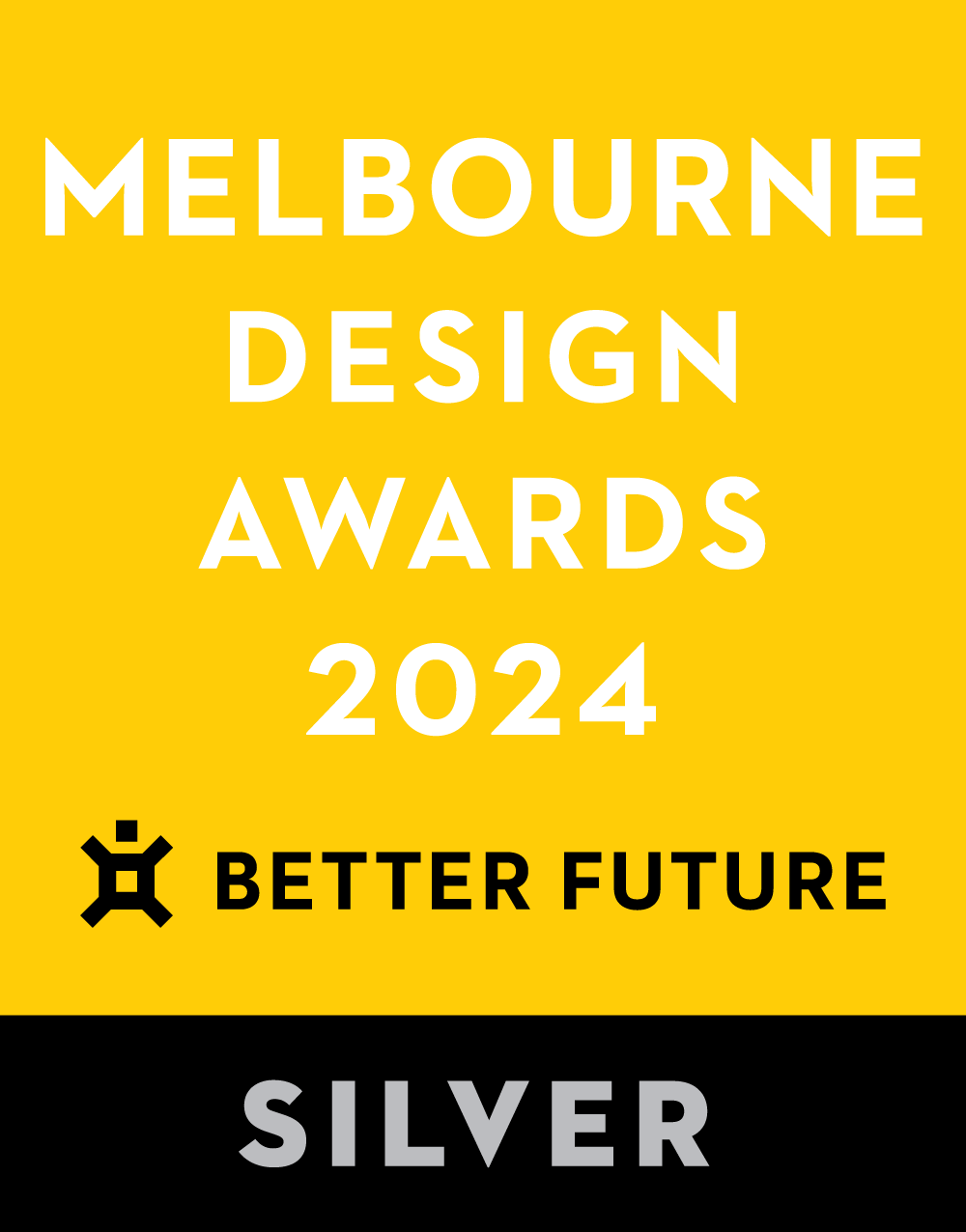Key Dates










Image Credit : Peter Nevett

Project Commissioner
Project Creator
Project Overview
Lewin Reserve Pavilion replaces an existing sports shed and club rooms on an established suburban field. This new piece of municipal cultural infrastructure is specifically for junior rugby and cricket, also providing a place for community gatherings.
The design separates the program into two Pavilions that nestle into the ground and become an extension of the landscape. ESD initiatives include the integration of landscape, passive heating & cooling, water collection and re-use and solar panels with the goal of achieving a self-sufficient building. Logistically, at times it seemed an almost impossible undertaking, requiring resolution of flood levels, universal accessibility, underground services and resistant neighbours.
These municipal projects are important gathering places in our city and deserve a committed approach, they need to be comfortable and useful outside of their core purpose and to demonstrate a literate understanding of a valuable architectural tradition but also be innovative, sustainable, flexible and beautiful.
Team
Rachel Nolan, Michael Macleod, Susan Syer, Hugh Goad, Elizabeth Campbell, Bradley Kerr, Marnie Morieson
Project Brief
Lewin Reserve pavilion is a hard-working new piece of municipal cultural infrastructure, providing a generous and durable home for junior cricket, rugby & community gatherings on a tricky site with steep topography, wedged between the Monash Freeway, drainage infrastructure, and sensitive neighbors. The brief was for welcoming and accessible changerooms & facilities to support more diverse participants, along with a social room, kiosk, and public toilet.
The challenge was that sports pavilions are often mute and forbidding when not in use. We were interested in a welcoming setting that encouraged gentle, incidental use. This is achieved by making intriguing and comfortable places to be near, on, within, or under the building.
Project Innovation/Need
The building program has been opportunistically stretched and manipulated to create space for ‘bonus’ public places wherever possible, for example:
- by embedding one pavilion in the ground the roof became a public viewing terrace
- by stepping the retaining wall between the two buildings we introduced a sheltered amphitheatre
- by widening the circulation path we created a verandah with space to watch the game
- by introducing stepped bleachers we negotiate the height of the floor above the playing field (due to flood levels)
Design Challenge
Located in a flood-prone area, the new structures navigate levels to ensure equitable access and minimize visual impact to sensitive neighbors. ESD initiatives include passive heating & cooling, water collection and re-use and solar panels with the goal of achieving a self-sufficient building.
Importantly, this building has been designed to be a piece of public infrastructure and so it makes a concentrated effort to offer a broader contribution to the urban realm.
This contribution includes:
- a nuanced response to a context that is predicated on understanding both the immediate surroundings but also the cherished tradition of sports pavilions in 19th-century garden suburbs.
- A long-sighted view of the landscape and its ‘nestling’ effects. The landscape is addressed in multiple ways - through the siting and separation of the two pavilions, through the terraces, bleachers, and paths, through the morphology of the forms as objects in space, and finally, in conjunction with Landscape Architect Simon Ellis,
-A common failing of sports pavilions is that they are mute and forbidding when not in use. We were interested in a passive setting that welcomed gentle, incidental use – a place to sit after walking the dog reading a book or contemplating the verdant surroundings. This is achieved by making places to be near or under the building. Places to sit or lie or lean which are pleasant and connected to the views, offering protection from wind and sun.
Sustainability
The design separates the program into two pavilions that nestle into the ground.
The new structures navigate levels to provide flood protection, ensure equitable access, and minimize visual impact on sensitive neighbors.
By embedding the new pavilions into the hillside they become an extension of the landscape & the earth stabilizes internal temperatures.
Integral ESD initiatives include passive heating & cooling, water collection and reuse, capturing daylight, fossil-fuel-free, heat-pump hot water systems, and solar panels to achieve a self-sufficient building.
Architecture - Public and Institutional
This award celebrates the design process and product of planning, designing and constructing form, space and ambience that reflect functional, technical, social, and aesthetic considerations. Consideration given for material selection, technology, light and shadow.
More Details

